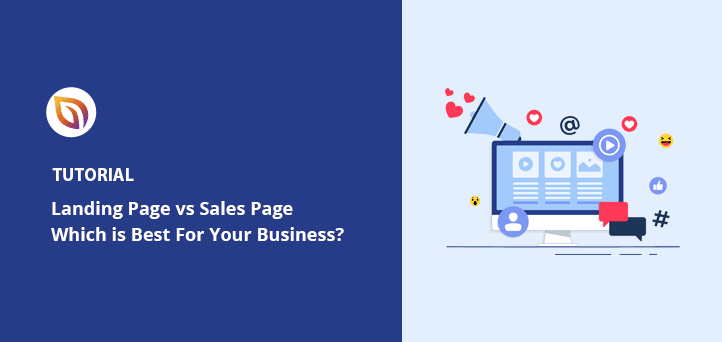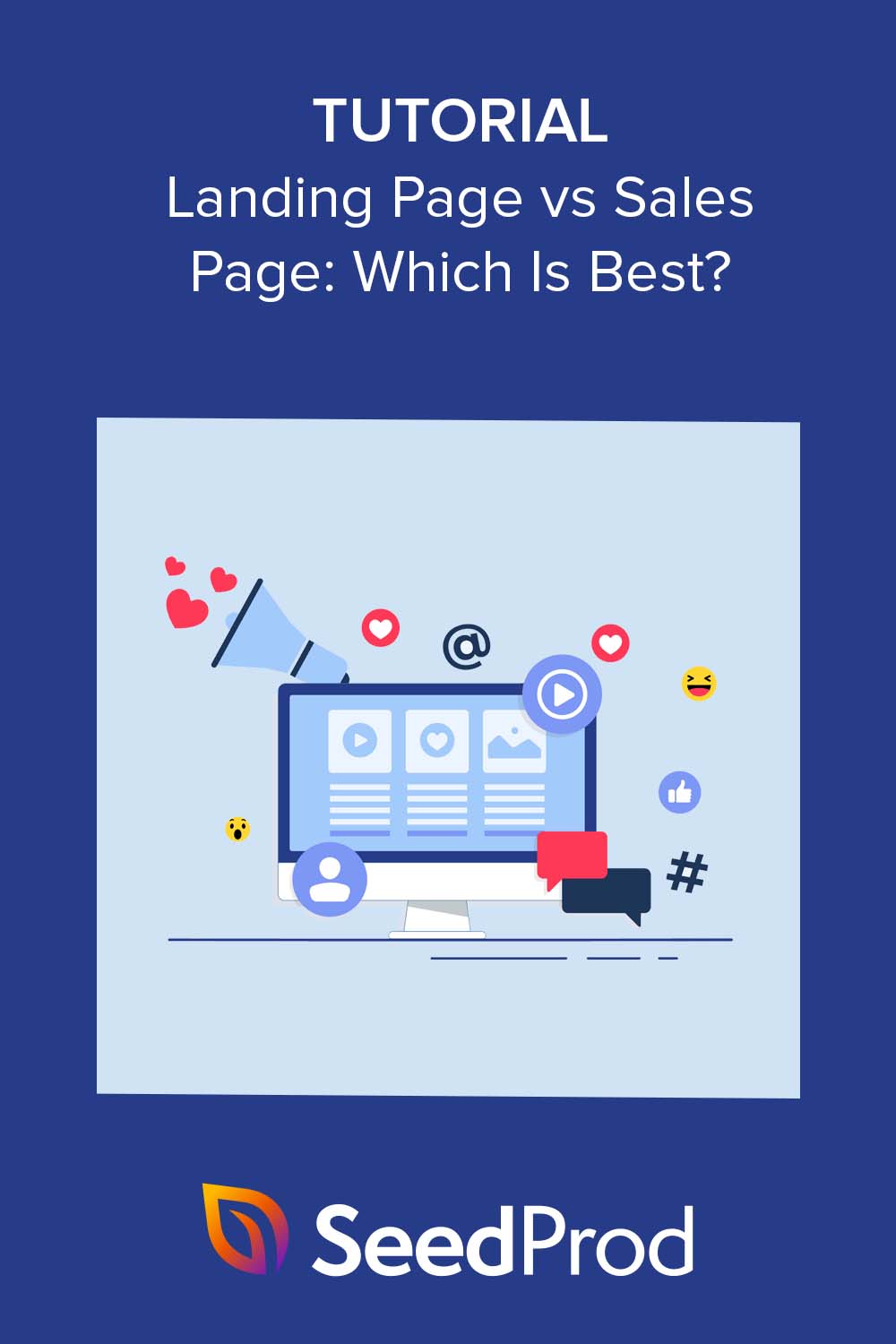Do you want to learn the difference between a landing page and a sales page?
Landing pages and sales pages are essential tools that you can use to drive conversions and generate revenue. However, they serve different purposes and require different approaches. By understanding the differences, you can create more effective marketing campaigns that drive results.
In this article, we’ll look at the similarities and differences between landing pages vs sales pages to help you decide which one your small business needs.
Let’s kick things off by learning what a landing page is.
What Is a Landing Page Exactly?
A landing page is a single web page that you “land on” after clicking an ad or search engine results. It’s designed to capture your attention and persuade you to take a specific action, like filling in a form, signing up for a free trial, or downloading an ebook.
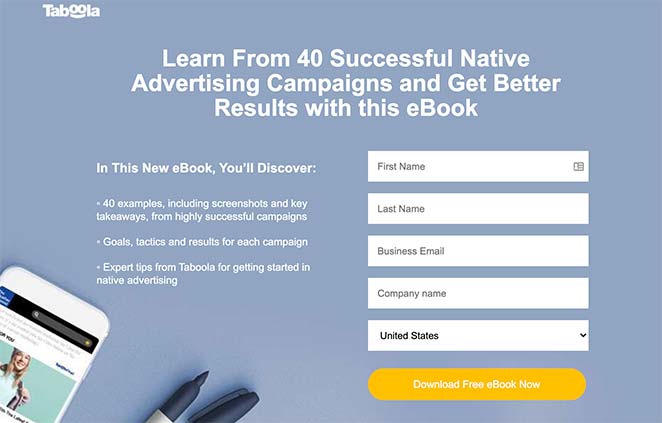
Many businesses use landing pages in digital marketing campaigns for lead generation or to convert visitors into customers. They typically focus on a single product or offer, making it easier for visitors to decide and take action.
For example, if you’ve ever clicked on a banner ad or a link and found yourself on a page asking you to enter your email or download a free guide, that’s a landing page.
The key goal of a landing page is to provide enough information and value to visitors so that they feel compelled to take the action you want them to. As such, a good landing page design will often use the following common elements:
- Headline: The headline is the first thing visitors see when they land on the page. It should be attention-grabbing and convey your offer or value proposition.
- Subheadline: The subheadline offers more information and context and often expands on your headline.
- Call to Action (CTA button): The CTA is the button or link visitors click to take action, like registering for a webinar or downloading a freebie. It should be easy to notice and clearly explain what to do next.
- Form: You can use a form to collect information from visitors, such as their name and email address.
- Social Proof: Social proof includes customer reviews, testimonials, or endorsements that provide credibility and build trust with visitors.
- Images or Video: Consider using high-quality images or videos to represent your offer visually.
- Benefits and Features: Benefits and features help highlight your value proposition and explain why your product differs from the competition.
When To Use a Landing Page
It’s best to use a landing page whenever you want to convert website visitors into leads or customers. We call this lead generation because the goal is to engage your target audience and get them to enter your sales funnel as new leads.
Moreover, it’s best to use a landing page to drive traffic to a specific offer or product. For example, if you’re running a Facebook ad campaign to promote a new ebook, you could create a landing page focusing solely on the offer.
The benefit of using a landing page is that it’s highly focused and conversion-driven. Unlike your website’s homepage or other pages, landing pages have a specific goal in mind, making them more effective at getting visitors to take action.
Here are some situations where you might want to use a landing page:
- Promote a new product or service.
- Generate leads by offering a free trial, consultation, or guide.
- Encourage visitors to sign up for a newsletter or email list.
- Promote a limited-time offer or discount.
- Collect entries for a giveaway or contest.
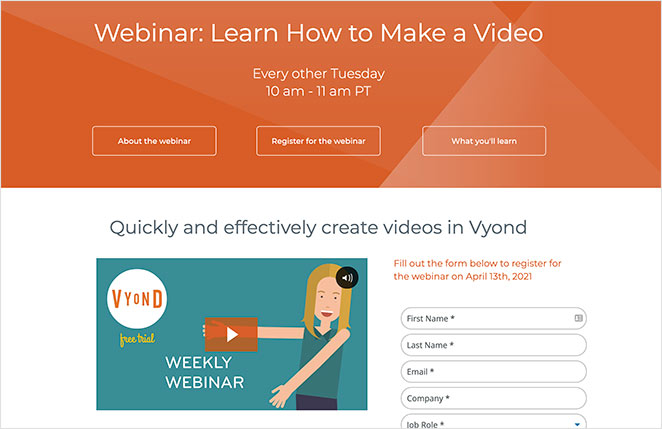
In short, if you have a specific goal and want to boost conversion rates, a landing page is often the best way to achieve that goal.
What Are the Types of Landing Pages?
There are several types of landing pages that you can use to achieve different goals. Here are some of the most commonly used types:
- Click-Through Landing Page: An eCommerce landing page designed to provide more information about a product or service and encourage visitors to click through to a purchase page.
- Lead Generation Landing Page: A landing page for capturing leads by offering a free guide, consultation, or another lead magnet in exchange for contact information. The goal of a lead generation landing page is to build an email list that you can use for future marketing campaigns.
- Squeeze Page: This is a type of landing page focused solely on generating leads. A squeeze page typically has minimal information and a simple form to capture contact information, such as an email address.
- Splash Page: You can use splash pages to showcase a new product or promotion in conjunction with a social media or email marketing campaign to build excitement and generate interest.
- Microsite: This landing page is designed to be a standalone website for a specific campaign or product. A microsite may include several pages and provide more in-depth information about your product or service.
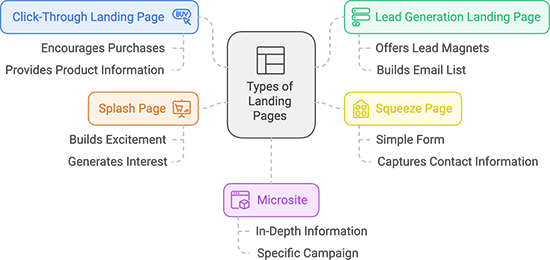
If you need a more visual guide, you can check out these excellent landing page examples. By understanding the different types of landing pages and when to use them, you can create a more effective marketing strategy that drives results.
Now that you know more about landing pages, what exactly is a sales page?
What Exactly Is a Sales Page?
A sales page is a specific page on your website designed to sell a product or service. It’s often longer and more detailed than a landing page and provides comprehensive information about your product or service, its features, benefits, and pricing.
A sales page aims to convince website visitors to make a purchase by addressing any objections or concerns they may have and highlighting the product’s value and benefits. Business owners use sales pages in digital marketing campaigns to generate revenue.
So, if you’ve ever clicked on a Google ad to buy an online course or product and found yourself on a page with a lot of information about it, that’s a sales page.
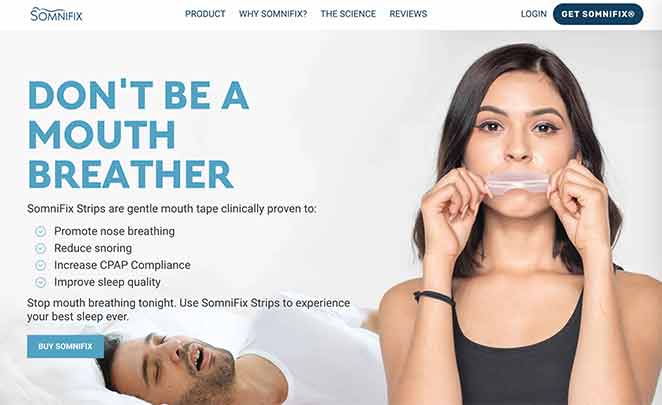
A sales page typically includes design elements similar to landing pages to offer the best user experience. However, its focus is on increasing conversions via sales.
For example, the page’s copywriting may focus more on solving people’s pain points by providing more comprehensive social proof like case studies, user-generated content, and video testimonials.
Additionally, a sales page may also include pricing and payment options, a money-back guarantee, frequently asked questions (FAQ), and a live chat to talk to your sales team.
When to Use a Sales Page?
As we mentioned above, you can use sales pages in marketing campaigns where the aim is to turn potential customers into sales by convincing them to buy your product or service.
The key difference between a sales page and a landing page is that a sales page focuses more on the product itself, whereas a landing page focuses on a specific offer related to the product.
Here are some situations where you might want to use a sales page:
- Launch a new product or service and generate sales
- Promote a product or service that’s not selling as well as you’d like
- Sell a high-ticket item that requires more explanation and persuasion
- Highlight the features, benefits, and value of your product in more detail
The key to a successful sales page is to provide enough information and value so visitors feel confident and motivated to purchase. Therefore, if you have a product or service that you want to sell, a sales page is the best way to achieve that goal.
What Are the Types of Sales Pages?
Since sales pages are best for selling products and services, several different types exist. Check out some of the most common types of sales pages below:
- Long-Form Sales Page: This type of sales page is long and detailed, often running several pages. It’s designed to provide comprehensive information about your product and address visitors’ objections or concerns. Many businesses use this page type for products with a higher price point.
- Video Sales Page: With this sale page, you can use video to showcase your product and provide visitors with more information. A great time to use this page is when your product requires a demonstration to understand more.
- Short-Form Sales Page: This sales page is shorter and more to the point. It provides less information than a long-form sales page but still highlights your product or service’s key features and benefits.
- Product Launch Sales Page: This page is popular for promoting a new product launch. It helps build excitement and anticipation and often includes a countdown timer or other elements to create urgency.
- Upsell Sales Page: This type of sales page can help you promote additional products to customers who have already purchased them. It’s designed to increase your overall revenue per customer.
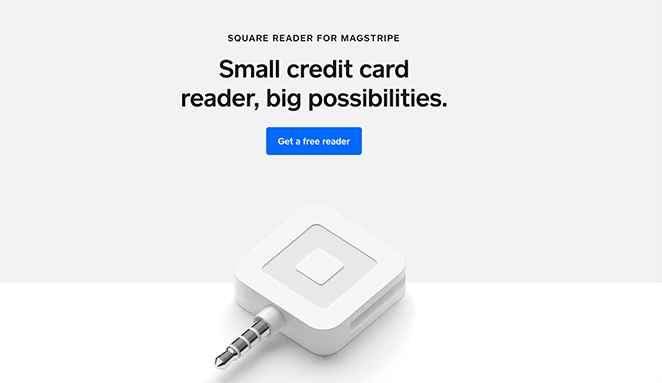
Need a little more inspiration? Check out these high-converting sales page examples from genuine brands.
Landing Page vs Sales Page: What Are the Differences?
Even though landing pages and sales pages drive conversions and achieve specific goals, there are some key differences between the two, which we’ll explore below.
Purpose of the Page
A landing page aims to capture leads or promote an offer, such as a free trial or eBook. The goal is to get visitors to take a specific action, like filling in a form or subscribing to a newsletter. Therefore, a landing page focuses on generating interest in the offer and persuading visitors to provide their details so that you can nurture them through email marketing campaigns, for example.
In contrast, the purpose of a sales page is to persuade visitors to purchase. The goal is to convince visitors that the goods or services offered are valuable and worth their money. As such, a sales page focuses on explaining the product’s benefits and features in-depth, providing social proof, and providing a clear and compelling call to action to make the purchase.
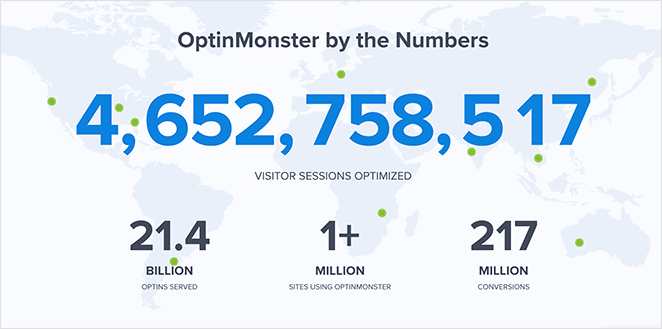
While both pages can be used to achieve a specific goal, landing pages are best for starting conversations with potential customers, while sales pages are better for closing the deal.
Page Length
Another key difference between a landing page and a sales page is its length.
Landing pages are typically shorter than sales pages and contain only the most essential information needed to convey your offer and persuade visitors to take action. They’re concise and focused, with a clear call to action that stands out on the page.
In contrast, sales pages are often longer and more detailed than landing pages, focusing on providing visitors with all the info they need to make a purchasing decision. They usually have sections covering product or service features and benefits, social proof, pricing, and a clear call to action.
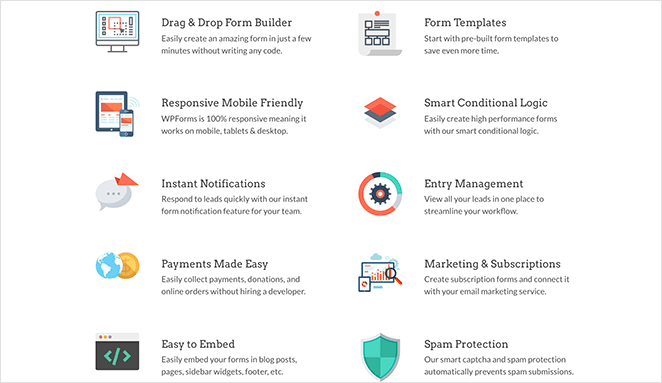
The length of a landing page versus a sales page often depends on your offer, target audience, and overall marketing strategy. However, landing pages are generally shorter and more focused, while sales pages are longer and more detailed.
Design of the Page
The design of a landing page and a sales page can also differ based on their purposes and target audience.
Landing pages are visually appealing, easy to scan, and use simple layouts with minimal distractions to ensure visitors’ attention focuses on the offer. They also use bright, contrasting colors and large fonts to draw attention to the most important elements on the page.
On the other hand, sales pages often have a more complex layout, featuring multiple sections with detailed information. They may include images or videos showing the product in action and use longer headlines and subheadings to give visitors more details.
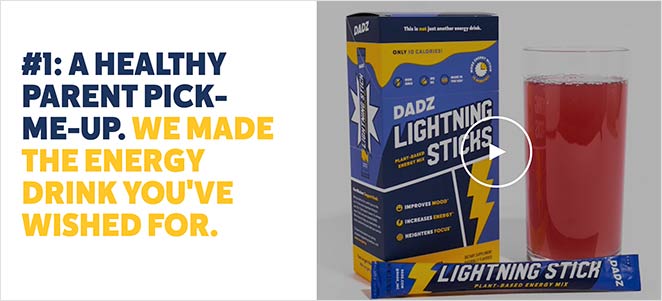
Both landing and sales pages can also include customer reviews or testimonials, but how they’re presented can vary.
Landing pages may use quotes or brief excerpts from customer reviews. In contrast, sales pages often include more detailed and specific testimonials that help build trust and credibility with visitors.
Page Targeting
The targeting of a landing page and a sales page can also differ. For instance, landing pages typically target a specific audience to collect contact information, like those who click an ad or an email campaign.
As such, the messaging is tailored to that audience’s specific needs and interests, strongly focusing on addressing their pain points and solving their problems.
In contrast, sales pages tend to target broader audiences to promote a product to a wider range of potential customers. Because of this, the messaging focuses on the product’s features and benefits to convince visitors that it’s worth their investment.
For example, a landing page promoting a free trial of a software product may target small business owners looking for an efficient way to manage their operations. However, a sales page promoting a high-end fitness product may target fitness enthusiasts willing to invest in their health and wellness.
Testing the Page
Another difference between landing and sales pages is how you test and optimize them for better performance.
Landing pages are often subject to A/B testing, where you create two versions of the page with one or more elements changed, such as the headline, call-to-action button, or color scheme. The goal is to find which version of the page has better conversion rates, so you can use the winning version to drive more traffic to the page.
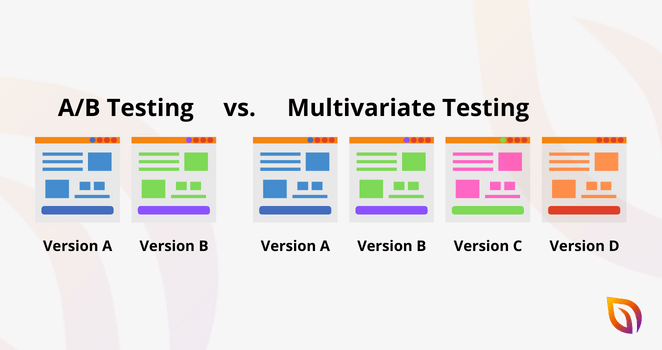
In comparison, sales pages can require more complex testing and optimization due to their longer length and greater content. Rather than simple A/B testing, sales pages may be subject to multi-variate testing, where you test multiple variables at once to find the most effective combination of elements, such as different headlines, images, video content, pricing, and social proof.
Testing and optimization are critical for both pages, as they help improve conversion rates and drive better results. By testing and optimizing various page elements, you can learn what resonates best with your target audience and make data-driven decisions on improving the page’s performance.
Page Cost
The cost of creating a landing page versus a sales page can vary for several reasons.
Since landing pages are shorter and have simpler designs than sales pages, they’re quicker and less expensive to produce. For example, you can create a landing page using pre-designed templates or website builders, saving time and money compared to creating a fully custom-designed sales page.
In contrast, sales pages are often longer and require more design and copywriting work to be effective. For example, you may need to hire a professional copywriter or marketing agency to create a compelling sales message that resonates with your audience. Or, you might need to create custom graphics, video content, or other multimedia elements, which can add to the overall cost.
As such, the cost of both pages can depend on the complexity, length, and level of customization you need. However, in general, landing pages tend to be less expensive.
Landing Page vs Sales Page: Which One Is Right for You?
Ultimately, the type of page you need will depend on the results you want to achieve.
A landing page is a good choice if you want to generate leads that you can nurture in the future by collecting contact information. However, a sales page is the better option if your main focus is increasing sales on a particular product or service.
But that’s not where this guide ends. Next, we’ll explain how you can make both types of pages with a single user-friendly WordPress plugin.
How to Create a Landing Page or Sales Page
If you want to create either page on your WordPress website, the easiest way is with a landing page builder.
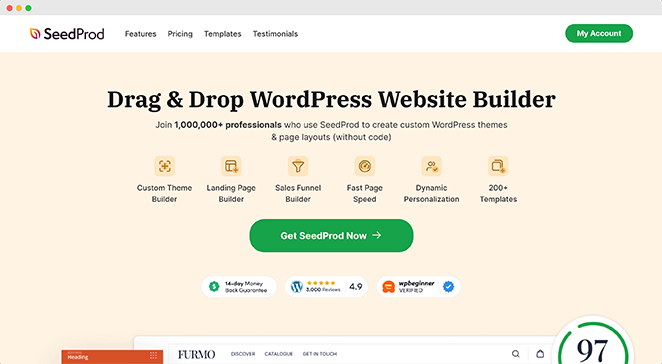
SeedProd is the best WordPress website and landing page builder used by over 1 million website owners. With its pre-made landing page templates and easy drag-and-drop builder, you can create landing pages and sales pages in less than 30 minutes.
This powerful plugin has a block-based interface with everything you need to generate leads and boost sales, including:
- CTA buttons
- Star ratings
- Countdown timers
- Pricing tables
- Testimonials
- Opt-in forms
- And more
It also works seamlessly with popular WordPress plugins, including OptinMonster for popups, AIOSEO for SEO, WPForms for contact forms, and MonsterInsights for Google Analytics.
Even better, we’ve written step-by-step guides for making both types of pages with SeedProd:
So whether you’re an eCommerce business, startup, or blogger, you can create the perfect WordPress layouts without writing a single line of code.
There you have it!
We hope the guide has helped you learn the difference between a landing page and a sales page. Before you go, you might like this comparison of WooCommerce and Shopify. You can also see this guide on how to create a sales funnel landing page in WordPress.
Thanks for reading! We’d love to hear your thoughts, so please feel free to leave a comment with any questions and feedback.
You can also follow us on YouTube, X (formerly Twitter), and Facebook for more helpful content to grow your business.

